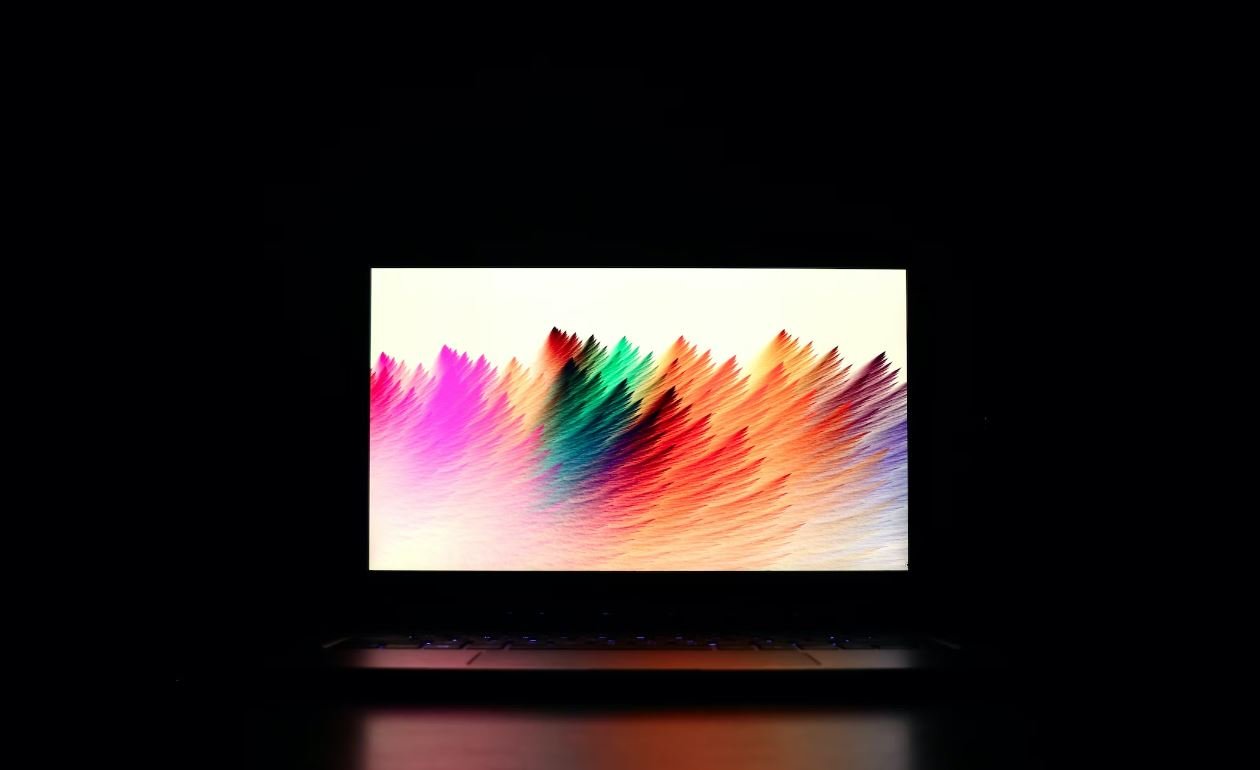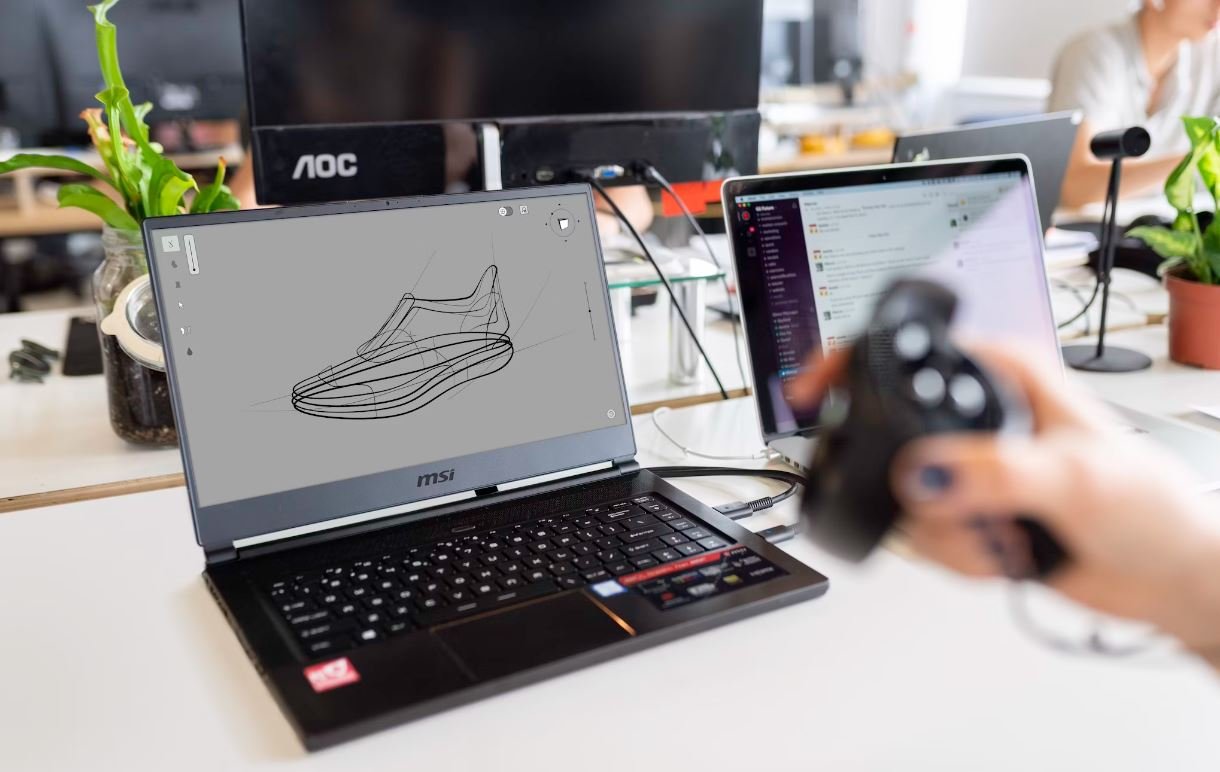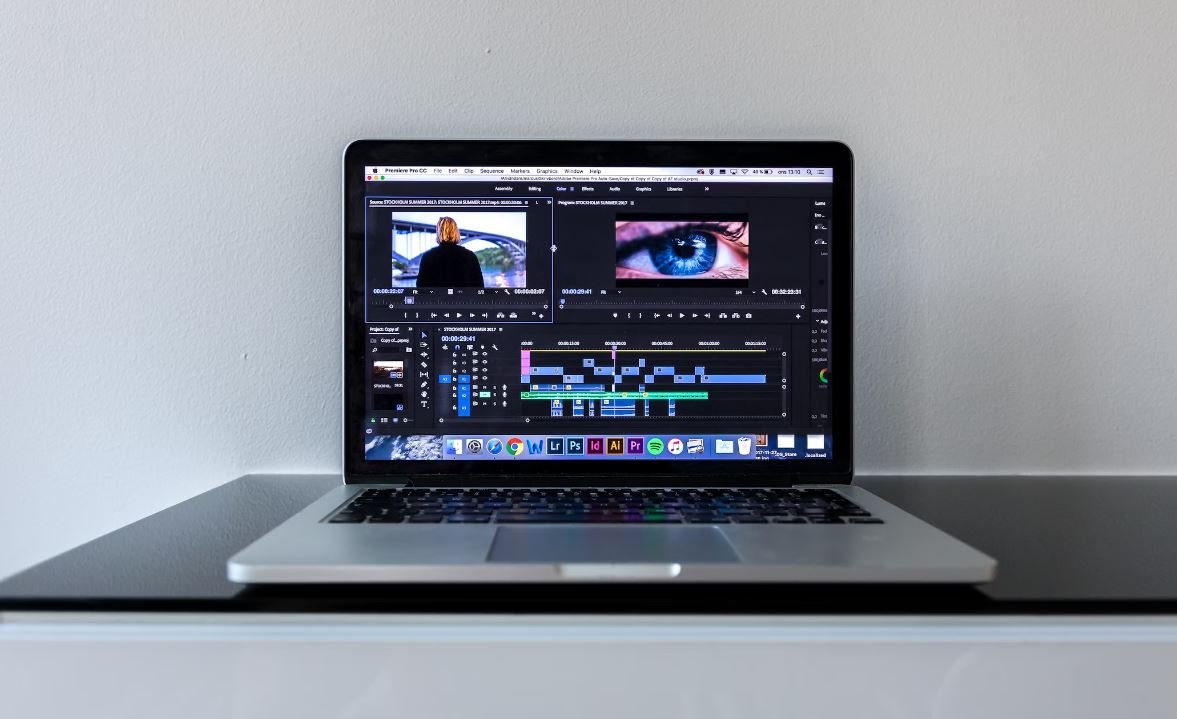Video Jockey
A Video Jockey (VJ) is a professional who hosts and presents videos on television or at live events. Similar to a disc jockey (DJ) in the music industry, a VJ curates and presents video content, providing commentary and engaging with the audience. This role requires a combination of technical expertise, creativity, and communication skills.
Key Takeaways:
- Video Jockeys present and host videos on television or at live events.
- They curate video content, provide commentary, and engage with the audience.
- Technical expertise, creativity, and communication skills are essential in this role.
*Video Jockeys* are responsible for selecting and presenting a range of visual content, including music videos, promotional clips, and other video footage. They often work in collaboration with music producers, directors, and broadcasters to create an engaging and cohesive show. VJs need to have a deep understanding of the target audience’s preferences and interests to deliver a captivating viewer experience.
The role of a VJ has evolved with the digital age, with many VJs now hosting online video platforms and channels. They may also utilize graphic design tools and software to enhance visual effects and create a visually appealing presentation. With the rise of social media, VJs have expanded their reach and can interact directly with their audience through live streaming and online communities.
Skills and Attributes
Successful video jockeys possess a variety of skills and attributes that contribute to their effectiveness in the role. These skills include:
- Strong verbal communication skills for engaging the audience and providing commentary.
- Technical knowledge of video editing software and equipment.
- Ability to adapt to new technology and stay up to date with industry trends.
- Creativity and an eye for visual design to create appealing video presentations.
- A good understanding of music and video genres to curate appropriate content.
*Video Jockeys* often have a deep passion for music and a keen interest in visual arts. They have the ability to create a seamless flow between videos, using transitions, effects, and mixing techniques to enhance the viewer’s experience. Building a personal brand and developing a unique style of presenting are additional factors that contribute to a VJ’s success in the industry.
Roles and Opportunities
Video Jockeys have a wide range of roles and opportunities within the industry:
- Hosting music video shows on television networks.
- Presenting live video content at music festivals and events.
- Creating and managing online video platforms and channels.
- Collaborating with musicians and artists to produce music videos.
- Working as video editors or visual effects specialists in film and television production.
*Video Jockeys* also have opportunities to work in advertising, creating video advertisements and promotional content for brands. They can also venture into freelance work, offering their services for private events and parties. The versatility of a VJ’s skills allows for diverse career paths within the video and entertainment industry.
| Video Jockey Skills | Video Jockey Roles |
|---|---|
| Verbal Communication | Hosting Music Video Shows |
| Technical Knowledge | Presenting Live Video Content |
| Creativity | Creating & Managing Online Platforms |
| Video Jockey Traits | Video Jockey Opportunities |
|---|---|
| Passion for Music | Collaborating on Music Videos |
| Visual Arts Interest | Working as Video Editors |
| Personal Branding | Freelance Work |
Conclusion
Video Jockeying is a dynamic and creative profession that offers a variety of exciting opportunities within the entertainment industry. Whether hosting music video shows, curating online content, or working on music videos, VJs play a crucial role in engaging audiences and delivering visually captivating experiences.

Common Misconceptions
Misconception 1: Video Jockey (VJ) is synonymous with Disc Jockey (DJ)
One common misconception is that a Video Jockey (VJ) is the same as a Disc Jockey (DJ). While both roles involve music and entertaining an audience, their responsibilities and mediums differ.
- DJs primarily focus on mixing and playing music
- VJs create visual experiences by mixing and presenting music videos or visual content
- VJs often work alongside DJs to enhance the overall entertainment experience
Misconception 2: VJs are only found in nightclubs
Another misconception is that Video Jockeys (VJs) are exclusively found in nightclubs. While nightclubs may be a common venue for VJs, they can also be seen in a variety of other settings and events.
- VJs can be found at music festivals, concerts, and live performances
- They are also hired for corporate events, product launches, and trade shows
- VJs can even be seen in TV studios and on music channels
Misconception 3: Anybody can become a VJ without any training
Some people believe that anyone can become a Video Jockey (VJ) without any training or experience. However, being a successful VJ requires certain skills and knowledge.
- Technical expertise in video and audio equipment is important
- Understanding of various music genres and the ability to curate playlists
- Creative skills for creating visually appealing and engaging content
Misconception 4: VJs just press play and let the visuals run on their own
Contrary to popular belief, Video Jockeys (VJs) are not simply press-and-play operators who let the visuals run on their own without any input.
- VJs actively mix and manipulate video content during their performance
- They synchronize visuals with the music and adapt it to the audience’s energy
- VJs often improvise and respond to the crowd, creating a dynamic experience
Misconception 5: VJs are overshadowed by DJs and are less important
There is a misconception that Video Jockeys (VJs) are overshadowed by Disc Jockeys (DJs) and are viewed as less important. However, VJs play a crucial role in enhancing the overall entertainment experience.
- VJs add a visual aspect that complements the audio experience provided by DJs
- They create an immersive environment that captivates the audience
- VJs contribute to setting the mood and atmosphere of an event or performance

The Rise of Video Jockeys
In this article, we explore the growing phenomenon of video jockeys (VJs), talented individuals who curate and mix visual content seamlessly to enhance the music experience at clubs, events, and concerts. Through their unique skills, video jockeys captivate audiences by synchronizing captivating visuals with live music performances. Below are ten tables illustrating various aspects of the world of video jockeys.
Table: Top 10 Cities with Emerging Video Jockey Scenes
Video jockey culture has flourished in various cities across the globe. The table below showcases the top 10 cities fostering emerging video jockey scenes, based on the number of VJ collectives and events held annually.
| City | Number of VJ Collectives | Annual Events |
|---|---|---|
| Berlin | 12 | 46 |
| New York City | 8 | 34 |
| Tokyo | 10 | 28 |
| London | 9 | 24 |
| Paris | 6 | 18 |
| Los Angeles | 7 | 16 |
| Amsterdam | 5 | 12 |
| Mexico City | 4 | 10 |
| São Paulo | 4 | 8 |
| Sydney | 3 | 6 |
Table: Most Popular Genres among Video Jockey Performances
Video jockeys employ various genres of visuals to complement different music styles. The table presents the most popular genres among video jockey performances based on survey responses from VJ professionals.
| Genre | Percentage of Video Jockeys |
|---|---|
| Abstract | 45% |
| Minimalist | 38% |
| Psychedelic | 33% |
| Glitch | 27% |
| Retrowave | 22% |
Table: Most Requested Visual Techniques by Event Type
Video jockeys utilize a range of visual techniques to amplify the energy of different events. The table showcases the most requested visual techniques for three popular event types: concerts, nightclubs, and festivals.
| Event Type | Top Requested Visual Techniques |
|---|---|
| Concerts | Projection Mapping, Overlay Effects, Stage Lighting Sync |
| Nightclubs | Real-time Video Mixing, Seamless Transitions, Live Camera Feeds |
| Festivals | Immersive 3D Graphics, LED Screen Effects, Interactive Visuals |
Table: Leading VJ Software
In their craft, video jockeys rely on powerful software to create and control visual content. The table below highlights the leading software used by video jockeys across the industry.
| Software | Usage Percentage |
|---|---|
| Resolume Arena | 59% |
| VDMX | 22% |
| Modul8 | 12% |
| GrandVJ | 7% |
Table: Average Income of Video Jockeys per Location
The income of video jockeys can vary depending on their location. The table showcases the average annual income of video jockeys in different cities worldwide.
| City | Average Annual Income (USD) |
|---|---|
| New York City | 80,000 |
| Berlin | 60,000 |
| London | 55,000 |
| Tokyo | 50,000 |
| Los Angeles | 45,000 |
Table: Gender Distribution among Video Jockeys
The world of video jockeys is gradually becoming more diverse. This table portrays the gender distribution of video jockeys within the industry.
| Gender | Percentage of Video Jockeys |
|---|---|
| Male | 70% |
| Female | 25% |
| Non-binary | 5% |
Table: Preferred Hardware Setup by Video Jockeys
Video jockeys rely on various hardware configurations to deliver their visual performances. The table below displays the preferred hardware setup chosen by video jockeys worldwide.
| Hardware | Usage Percentage |
|---|---|
| Laptop and MIDI Controller | 48% |
| Custom-Built VJ Workstation | 30% |
| Video Mixer and Control Surface | 15% |
| Multiple Monitors and Graphics Card | 7% |
Table: Main Influences for Video Jockeys
Video jockeys draw inspiration from a variety of sources to create their unique visual performances. The table highlights the main influences cited by video jockeys.
| Influence | Percentage of Video Jockeys |
|---|---|
| Modern Art | 50% |
| Experimental Film | 42% |
| Music Videos | 35% |
| Virtual Reality | 28% |
| Nature | 15% |
Table: Video Jockey Certification Programs
To enhance their skills, many video jockeys pursue certification programs offered by renowned institutions. This table presents notable certification programs available to aspiring video jockeys.
| Certification Program | Offered By |
|---|---|
| International VJ Association Certification | International VJ Association (IVJA) |
| Advanced Video Mixing Techniques | Berklee College of Music |
| Live Visual Performance | Red Bull Music Academy |
Conclusion
The rise of video jockeys has transformed the nightlife and event scene, creating a visually immersive experience that goes hand in hand with music. From the flourishing VJ scenes in cities around the world to the diverse genres and techniques utilized, video jockeys are continuously pushing the boundaries of visual artistry. As the field grows, more gender representation and specialized education programs are emerging, further solidifying video jockeying as a distinctive and exciting profession. With their captivating performances, video jockeys have become an integral part of the modern music landscape, enriching the audiovisual experience for audiences worldwide.
Frequently Asked Questions
What is a Video Jockey?
A Video Jockey (VJ) is an individual who hosts and presents videos, often music videos, on television or other broadcasting platforms.
What are the job responsibilities of a Video Jockey?
The job responsibilities of a Video Jockey typically include selecting and introducing videos, providing commentary or insights during breaks, engaging with the audience, conducting interviews, and facilitating viewer interaction.
What skills are required to become a Video Jockey?
To become a Video Jockey, one should possess excellent communication and presentation skills, a deep knowledge of music or relevant topics, the ability to engage effectively with an audience, and proficiency in operating broadcasting equipment.
What qualifications are needed to become a Video Jockey?
There are no strict educational qualifications required to become a Video Jockey. However, having a diploma or degree in media studies, journalism, or a related field can be beneficial in acquiring the necessary knowledge and practical experience.
How can one gain experience as a Video Jockey?
Gaining experience as a Video Jockey can be achieved through various means such as internships or part-time positions at television networks, radio stations, or online platforms. Participating in local events, hosting podcasts, or creating personal video content can also help build relevant experience.
What is the average salary of a Video Jockey?
The average salary of a Video Jockey can vary depending on factors such as experience, location, and the platform they work for. However, in general, Video Jockeys can earn anywhere between $30,000 to $100,000 per year.
What are the working hours of a Video Jockey?
The working hours of a Video Jockey can vary greatly, as they often need to adapt to the schedules of their broadcasting platform. Video Jockeys may work irregular hours, including evenings, late nights, weekends, and holidays.
What are some popular Video Jockeys in the industry?
Some popular Video Jockeys in the industry include Carson Daly, Adam Curry, Martha Quinn, Nina Blackwood, and Tabitha Soren, among others.
What is the difference between a Video Jockey and a Disc Jockey?
The main difference between a Video Jockey and a Disc Jockey (DJ) is the medium they work with. While Video Jockeys present and introduce videos, Disc Jockeys play and mix recorded music. However, some individuals may perform both roles simultaneously.
Can Video Jockeys work in other fields of media besides television?
Yes, Video Jockeys can work in various fields of media, including radio, online streaming platforms, live events, and even social media. Their skills and expertise in hosting and presenting videos can be utilized in different formats and platforms.




